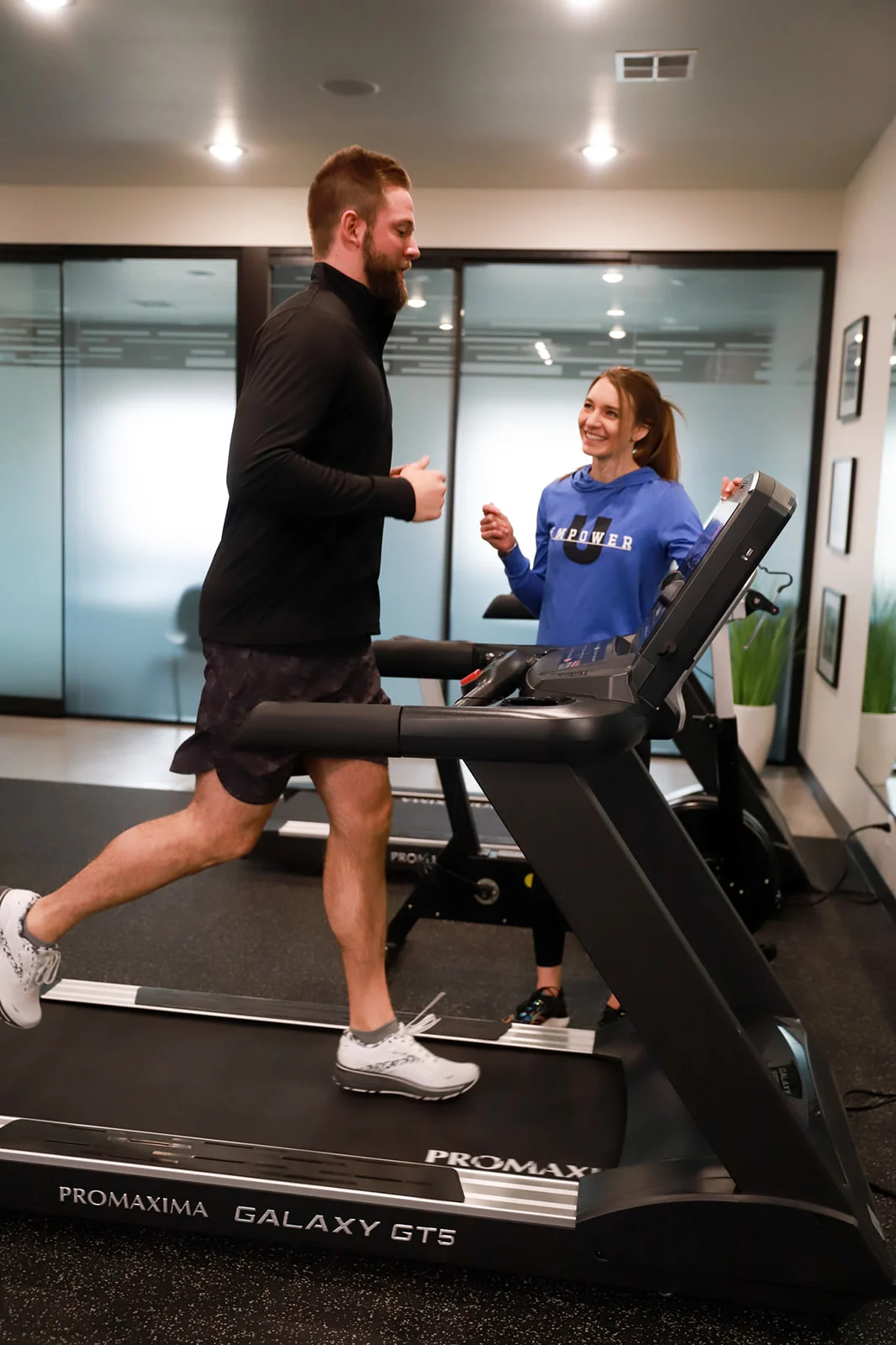Stay on the Court Without the Pain
Pickleball is exploding in popularity—and for good reason. It’s social, fast-paced, and easier on the joints than tennis. But as players rack up court time, one nagging issue keeps showing up: tennis elbow. Ironically, you don’t need to play tennis to suffer from it. In fact, it’s one of the most common injuries among recreational pickleball players today.
At The Empower U, we treat this condition all the time. The good news? Most cases of tennis elbow are completely preventable. You just need to understand how it develops, how to catch the early warning signs, and how to train your body to stay resilient.
Let’s walk you through how to protect your arm, play pain-free, and stay competitive—without risking a sidelining injury.
What Is Tennis Elbow, and Why Does It Happen?
Tennis elbow, formally known as lateral epicondylitis, is an overuse injury that affects the tendons on the outer part of your elbow. These tendons connect the muscles of your forearm to the bony bump on the outside of your elbow. When these muscles are strained repeatedly—especially during wrist extension and grip-heavy motions—they become irritated or inflamed.
In pickleball, this stress builds up from:
-
Repetitive paddle swings
-
Backhand shots
-
Poor paddle grip technique
-
Playing too often without recovery
The symptoms usually include pain or burning on the outside of the elbow, weakness when gripping or lifting, and discomfort during or after play. Left unaddressed, it can lead to chronic pain that interferes with your game and daily life.
Common Causes of Tennis Elbow in Pickleball
While every case is unique, we’ve found that certain patterns consistently lead to trouble. Here are the most common culprits we see at The Empower U:
1. Overuse and Poor Recovery
Playing multiple days in a row without rest—or suddenly increasing your volume of play—can overload the forearm muscles faster than your body can recover.
2. Improper Technique
A stiff wrist on follow-through, incorrect paddle angle, or over-reliance on the arm (instead of using your core and legs) can add excessive strain to the elbow.
3. Grip Size and Tension
If your paddle grip is too small or too tight, your forearm muscles work harder with every shot. This adds up quickly over time, especially during competitive play.
4. Muscle Imbalances
Weak shoulders, poor wrist mobility, or tight upper back muscles shift more stress to the elbow. Your elbow ends up doing work it’s not designed to handle alone.
5. Underlying Health Factors
Diabetes, smoking, and poor blood circulation can reduce tendon healing capacity. Even things like poor posture or prior neck issues can subtly increase your risk.
Diagnosing Tennis Elbow: Do You Need a Pro?
You don’t need a formal diagnosis to start taking better care of your elbow—but knowing what to look for can help you act early and avoid making things worse.
Here’s a quick self-check:
-
Do you feel tenderness or pain on the outer part of your elbow when gripping your paddle?
-
Is there a dull ache after playing, especially when lifting objects or turning doorknobs?
-
Does your wrist feel weak or fatigued during games?
-
Are you icing or massaging your forearm regularly just to get by?
If you answered yes to any of these, your body is trying to warn you.
But here’s where it gets serious—seek help immediately if:
-
The pain is sharp, persistent, or increasing
-
Your grip strength has noticeably decreased
-
You feel numbness or tingling in the hand
-
The elbow is swollen or visibly inflamed
These are signs that you may have more than just mild overuse. It could be time to get evaluated by a licensed physical therapist or sports rehab specialist at The Empower U.
Treatment Options for Pickleball-Related Tennis Elbow
If you’re already dealing with symptoms, don’t worry. Tennis elbow is treatable—and most players make a full recovery when it’s caught early.
Home Remedies
At the first sign of discomfort:
-
Rest and modify play: Take a few days off or reduce intensity.
-
Ice therapy: Apply cold packs to the elbow for 15-20 minutes after activity.
-
Compression sleeves: These can help reduce swelling and offer support during play.
-
Forearm stretches: Gentle stretching helps reduce tension in the extensor tendons.
Physical Therapy
This is where most players get real, lasting results.
At The Empower U, we provide customized physical therapy programs that address:
-
Soft tissue restrictions using manual therapy
-
Targeted strengthening of wrist, shoulder, and core muscles
-
Grip training to reduce overload
-
Biomechanical retraining to correct faulty swing mechanics
-
Blood flow stimulation to support tendon healing
Many clients feel significantly better after just a few sessions, and we focus on return-to-play protocols so you can safely get back on the court.
Medical Interventions
In severe or persistent cases, your provider may recommend:
-
Topical or oral anti-inflammatories
-
Ultrasound or shockwave therapy
-
Platelet-Rich Plasma (PRP) injections for tendon healing
-
Bracing to unload the extensor tendons
-
Surgical referral (only in rare cases where conservative care fails)
But for most, conservative therapy works. The key is addressing it early.
How to Prevent Tennis Elbow in Pickleball
Now let’s talk prevention—because the best injury is the one you never get.
Master Your Technique
Poor swing mechanics are one of the biggest causes of strain. Whether it’s your backhand, dink shot, or serve, small changes in your form can make a big difference. Consider working with a coach or getting a video analysis of your stroke.
Adjust Your Paddle and Grip
Make sure your paddle grip size fits your hand. A grip that’s too small forces you to squeeze tighter. Choose a paddle with the right weight and balance to reduce vibration. Don’t death-grip the paddle—keep it firm but relaxed.
Warm Up the Right Way
Before you step on the court:
-
Do light cardio for 3–5 minutes
-
Perform dynamic arm swings, shoulder rolls, and wrist circles
-
Add some forearm and triceps stretches
-
Practice slow, controlled swings to “wake up” your arm
Strengthen What Supports You
A strong body takes pressure off your elbow. Focus on:
-
Wrist extension/flexion exercises
-
Eccentric loading of the forearm (especially extensor muscles)
-
Shoulder stability work (e.g., external rotations, scapular control)
-
Rotational core strength to power your swing without overusing the arm
A physical therapist can create a custom exercise routine specific to your needs.
Prioritize Recovery
Don’t ignore the small aches. Take a day off, hydrate, stretch, and ice when needed. Recovery is part of the game plan—not a sign of weakness.
Why Choose The Empower U for Pickleball Injury Prevention?
You don’t have to push through elbow pain or sit out the season. At The Empower U, we specialize in helping active adults stay strong, pain-free, and competitive.
Our personalized rehab and performance programs are designed with the pickleball player in mind. Whether you’re a beginner or a tournament-level athlete, we help you recover, rebuild, and return to play better than before.
Most importantly, we don’t just treat pain—we teach you how to prevent it from coming back.
Ready to Get Back in the Game?
Don’t wait until the pain gets worse. If you’ve been feeling that nagging elbow ache or want to make sure it never starts, we’re here to help.
Book your consultation with The Empower U today and get expert care, personalized guidance, and a plan that puts your game—and your health—first.
Let’s keep you playing, pain-free.


